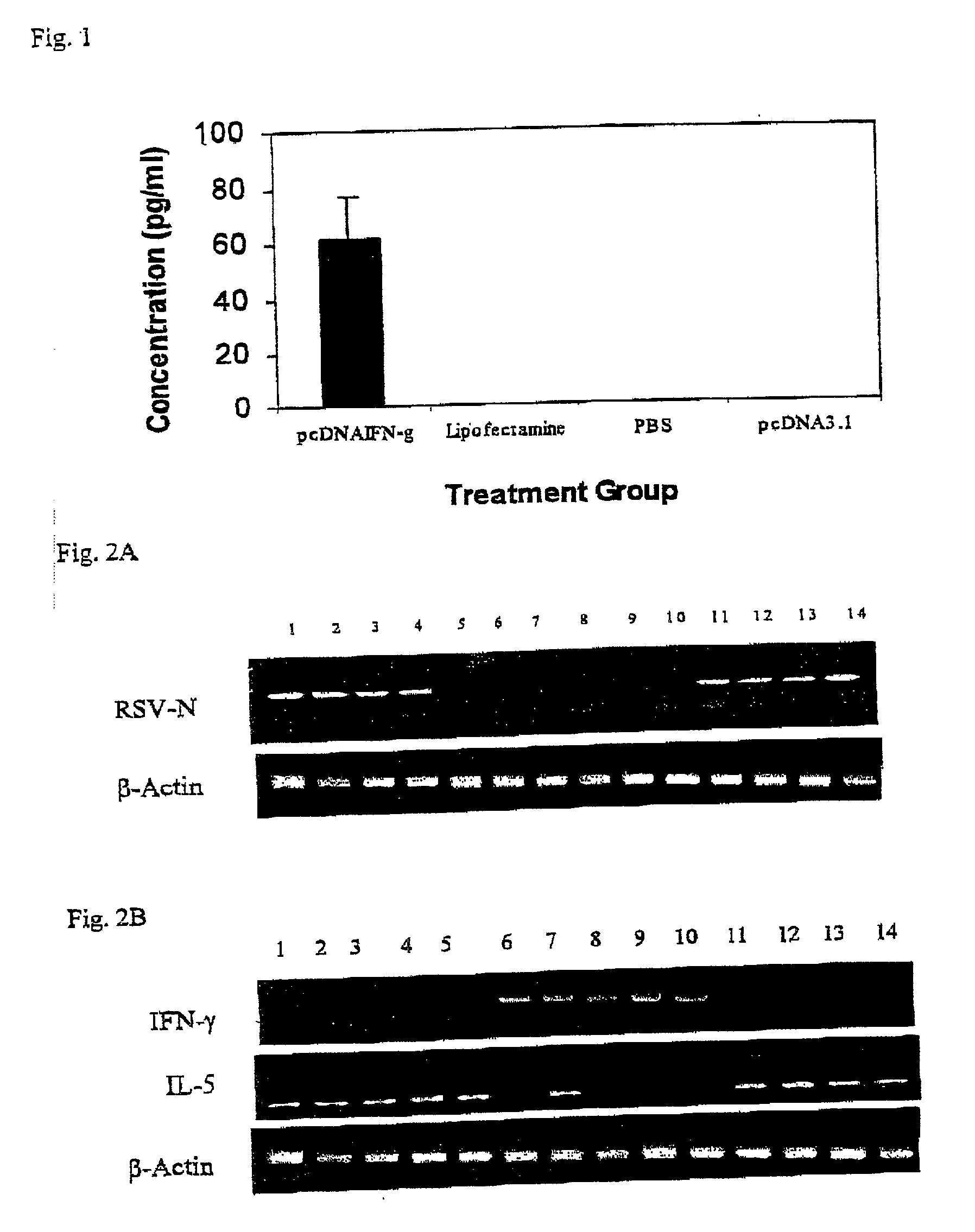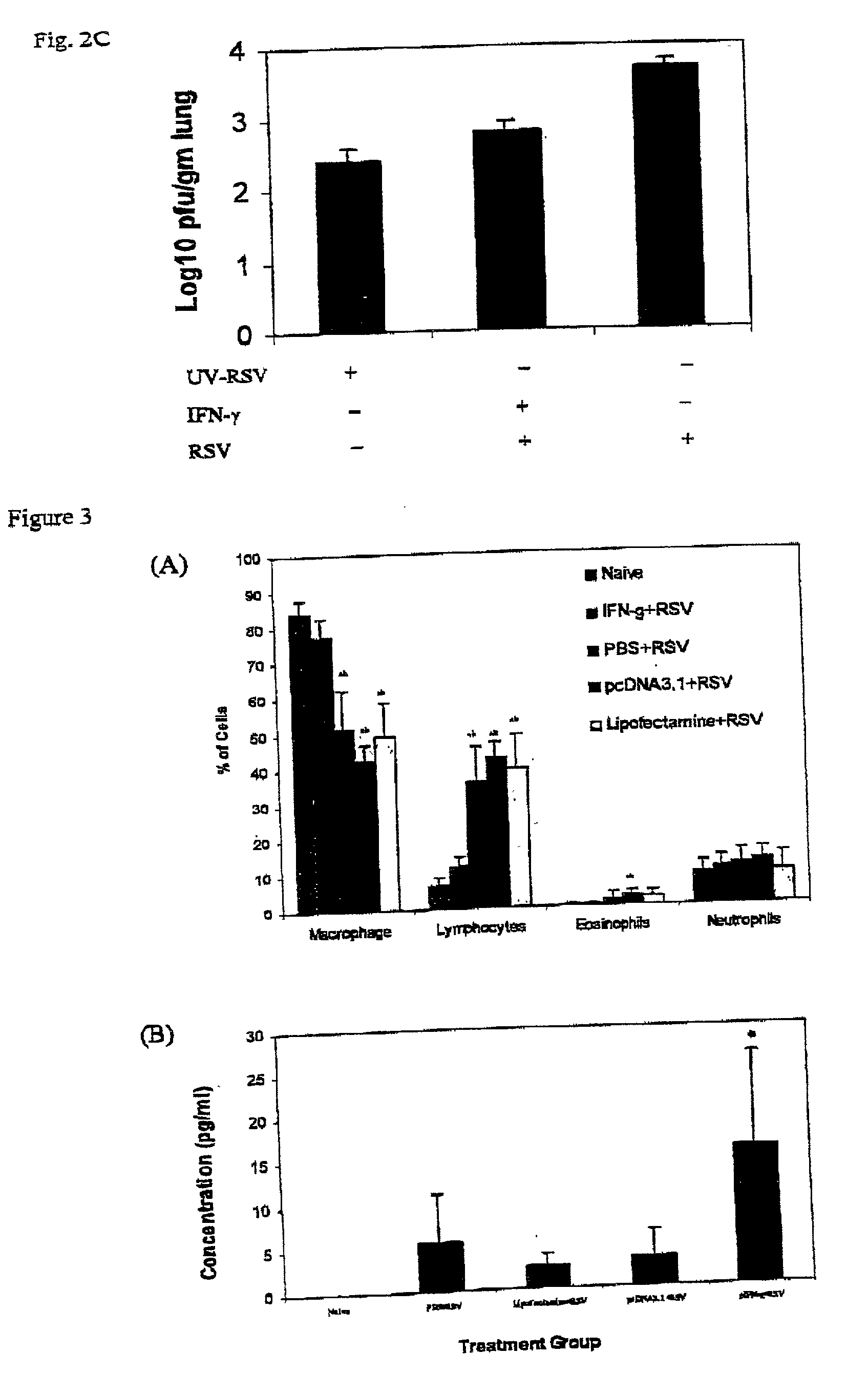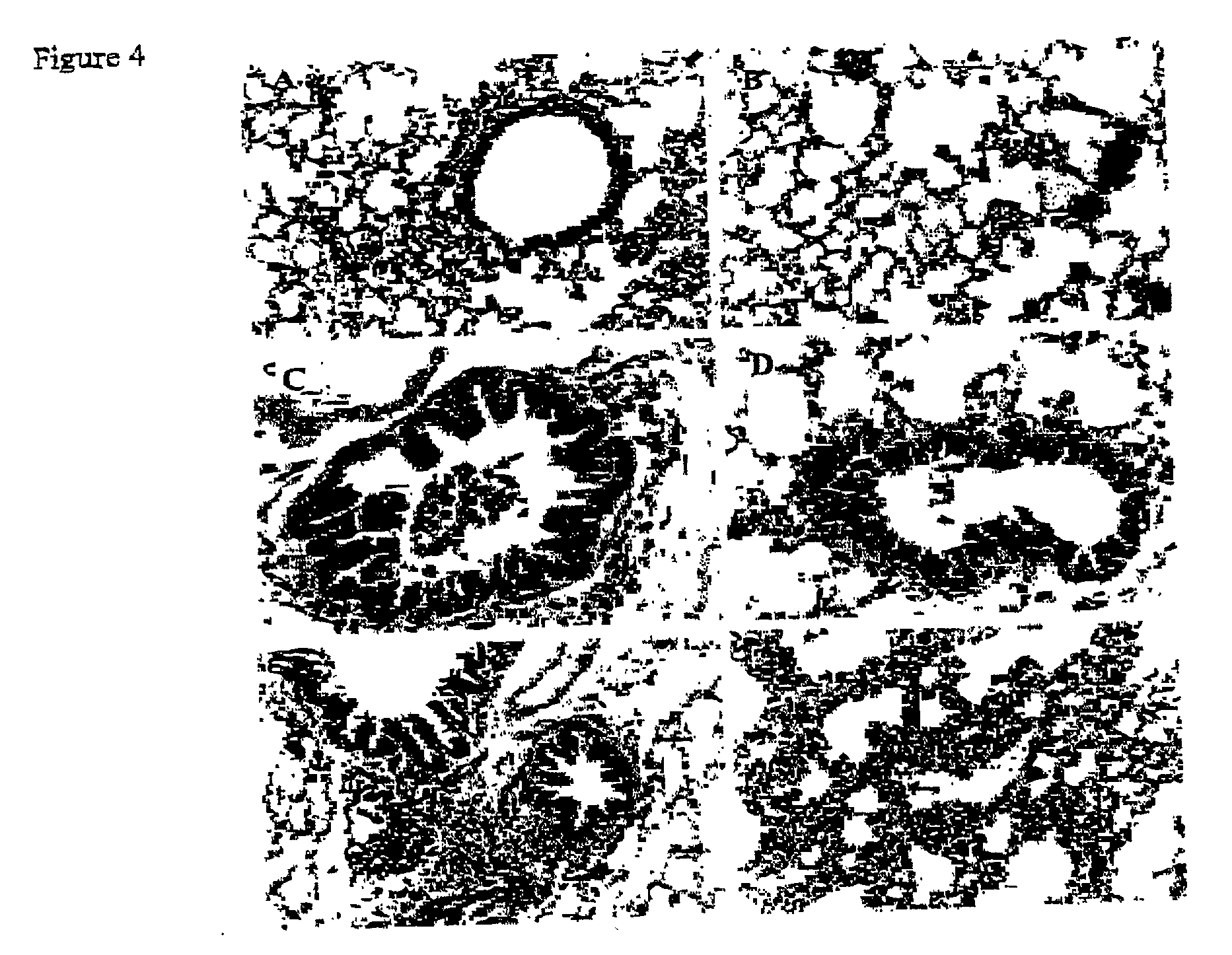Method of intranasal gene transfer for protection against respiratory infection
a technology of intranasal gene and protection against respiratory infection, which is applied in the direction of antibody medical ingredients, applications, peptide/protein ingredients, etc., can solve the problems of no fda approval, no immunosuppressed population currently approved, and significant excess morbidity and mortality in the elderly
- Summary
- Abstract
- Description
- Claims
- Application Information
AI Technical Summary
Problems solved by technology
Method used
Image
Examples
example 1
[0078] Direct DNA inoculations are administered as a method of subunit vaccination. Plasmid DNAs encoding influenza virus hemagglutinin glycoproteins have been tested for the ability to provide protection against lethal influenza challenges. In immunization trials using inoculations of purified DNA in saline, 67-95% of test mice and 25-63% of test chickens were protected against the lethal challenge. Good protection was achieved by intramuscular, intravenous and intradermal injections. In mice, 95% protection was achieved by gene gun delivery of 250-2500 times less DNA than the saline inoculations. Successful DNA vaccination by multiple routes of inoculation and the high efficiency of gene-gun delivery highlight the potential of this promising new approach to immunization.
[0079] Plasmid DNAs expressing influenza virus hemagglutinin glycoproteins have been tested for their ability to raise protective immunity against lethal influenza challenges of the same subtype. In trials using tw...
example 2
[0131] A plasmid expressing IFN-.gamma. gene referred to as pIFN-.gamma. was developed to investigate its effects in reducing RSV-associated lung disease in BALB / c mice.
[0132] Intranasal administration of the pIFN-.gamma. results in the expression of IFN-.gamma. protein (62.19.+-.14.6 pg / ml) and decreased RSV replication in the lung. RT-PCR results demonstrate that vaccinated mice exhibit more than a 90% reduction in RSV infection as compared to the different controls. The mice vaccinated with pIFN-.gamma. versus controls and then infected with RSV exhibited a 27.3% decrease (p<0.05) in the bronchoalveolar lavage lymphocyte count. Control mice also exhibit an increase neotrophil count as compared to vaccinated mice. Few eosinophils are present following RSV infection in both controls and pIFN-.gamma. vaccinated mice. A significant reduction in epithelial cell damage, infiltration of mononuclear cells in the peribronchiolar and perivascular regions and thickening of the septa occur i...
PUM
| Property | Measurement | Unit |
|---|---|---|
| volume | aaaaa | aaaaa |
| concentrations | aaaaa | aaaaa |
| concentrations | aaaaa | aaaaa |
Abstract
Description
Claims
Application Information
 Login to View More
Login to View More - R&D
- Intellectual Property
- Life Sciences
- Materials
- Tech Scout
- Unparalleled Data Quality
- Higher Quality Content
- 60% Fewer Hallucinations
Browse by: Latest US Patents, China's latest patents, Technical Efficacy Thesaurus, Application Domain, Technology Topic, Popular Technical Reports.
© 2025 PatSnap. All rights reserved.Legal|Privacy policy|Modern Slavery Act Transparency Statement|Sitemap|About US| Contact US: help@patsnap.com



